
by Elizabeth Atalay | Apr 1, 2014 | Awareness, Being Thankful, Cooking, Food, Health, Humanitarian, International, Life Lesson, Nutrition, Poverty, Social Good, Uncategorized, World Events, World Moms Blog, World Motherhood
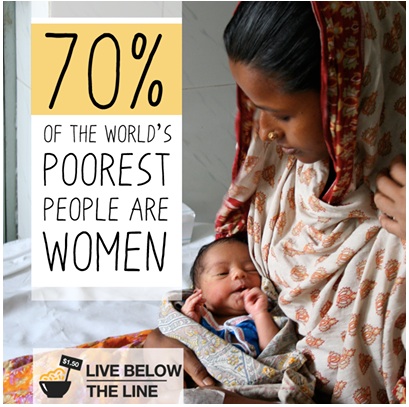
www.livebelowtheline.com
One could barely think straight after five days she was so hungry. Another who is pregnant, was sapped of all energy after only one day. Me, I caused a stink at the grocery store checkout over 65 cents, …..yes, we were impacted. I don’t think any of us will think of extreme poverty in the same way ever again.
Live Below The Line is a campaign created to change the way that people think about extreme poverty. The World Bank defines extreme poverty as living on under $1.25 per day, something that 1.2 billion people in the world currently survive on. These are the poorest of poor, and to truly understand what it means to live that way, you need to experience it. Five World Moms took on the challenge, and in each of our own words here is what we found:
Hannah Ashton – USA
I’m six months pregnant, which is hard enough in itself, particularly when my day is spent running round after my toddler, Maggie, and I hadn’t been sleeping very well, for just one day, I thought I would give the challenge a go. I could, of course, always stop, unlike the many pregnant women around the world, who sadly don’t have that option.
The day started well enough with oatmeal made with water, 2/3rds of a banana and a mug of green tea. I used the tea bag to make 3 more mugs of tea which were like green water by the third and fourth cup. This filled me up until lunchtime which was a kidney bean and carrot burger, using the recipe from “a girl called jack blog”, 1 oz. rice and two flatbreads. Immediately after eating lunch I was still hungry. It was a small amount of food and there was no more food until dinner. I generally eat dinner with my husband when he gets home from work at 8pm. Instead I was too hungry so I ate at 5:30 with Maggie when she ate her dinner. My dinner was a kidney bean, carrot, onion and tomato stew with 2 oz rice. Even though I had soaked the kidney beans overnight, boiled them for 20 minutes and let them simmer in the stew for an hour, they were still very hard, but I ate it all anyway.
Later, as my husband cooked himself a delicious looking steak sandwich, a radish salad and drank a glass of red wine, I cooked up my two remaining flatbreads and made a fresh mug of green tea. “It’s like we’re living in two different worlds tonight,” he commented.
At 3 am I woke up with a splitting headache and was extremely hungry. I came downstairs, took two Tylenol and had a large piece of the blueberry pie that was left over from the weekend. The next day, it is fair to say I really struggled even though the challenge was over. The LBTL diet of the day before had really affected me. I rang my husband at work in tears asking him to please come home from work earlier to help with Maggie’s bedtime routine as I didn’t have the energy to do it by myself (I have a nightly battle with teeth brushing but usually take it in my stride). I had to cancel a play date with a friend and I went to bed at 8:30. It was only by Wednesday, that I felt back to normal.
I’ve not known what it’s like to be really hungry before; I’ve never dieted or not had enough money for food. I can’t say if I was affected by this challenge more than others because I’m pregnant. In a few years, I plan to revisit the challenge and complete the five days. What I can say is the experience has profoundly affected me. No one should have to function on such little calories and the thought of a child having to go through this, especially, is completely heart breaking.
| Item |
Total cost ($) |
Per day ($) |
| 1 lb. dried kidney beans |
1.69 |
0.34 |
| 1 lb. white rice* |
1.07 |
0.21 |
| 24 oz. tomato sauce with basil and garlic |
1.00 |
0.20 |
| 5 instant apple and cinnamon oatmeal* |
0.89 |
0.18 |
| 1 lb. carrots |
0.66 |
0.13 |
| 1 lb. flour* |
0.65 |
0.13 |
| 1 lb. bananas |
0.59 |
0.12 |
| 10 green tea bags* |
0.50 |
0.10 |
| 0.5 lb. onions |
0.33 |
0.07 |
| Total |
7.38 |
1.48 |
*items bought with a friend so we could split the cost.

Deborah Quinn- Abu Dhabi
When I agreed to try living below the line for a day, I mostly had in mind trying to teach my kids about their relative privilege—that their status as “picky eaters” was in fact the ultimate luxury, given that a person only refuses one kind of food if he knows that another sort of food is available. In Abu Dhabi, where I live, $1.50 converts to about 5 dirhams, or about the cost of a large loaf of bread. I had decided that I would make a sort of vegetable, and as I selected one onion from India, one potato still crusted with dirt from Lebanon, two small carrots grown here in the UAE, I wondered whether the people who picked the vegetables were themselves living below the line in those countries.
My “soup” consisted of a chopped carrot, onion, and potato simmered in water with a bullion cube for flavor. I confess that I used my immersion blender to puree the vegetables when they were soft, so that the soup felt a bit thicker and more filling. I used another onion and some dried staples—lentils and rice—to make mejadra, a dish from Ottolenghi’s Jerusalem cookbook. Families all over this region have their own mejadra recipe, each with slightly different proportions of spices, but the dish is quintessential feed-a-lot-of-people-on-not-much: fried onions stirred into lentils and rice. With my soup and my lentils and rice, I wasn’t hungry, but I wasn’t terribly satisfied, either: I wanted sugar, I wanted coffee, I wanted fresh green lettuce and ripe tomatoes.
I thought about the migrant workers in Abu Dhabi, who come from desperately poor towns in places like Goa, Kerala, Islamabad, or Peshawar, who work here for a pittance but are nevertheless making more money than they would at home. What are they filling their bellies with, in order to face another day of work in Abu Dhabi’s broiling sunshine? And given the world’s insistence—and reliance—on global capitalism, with its relentless emphasis on bottom line profits, how will we ever bring about permanent change, so that boullion soup is something you eat only when you have an upset tummy and not because it’s all you can afford?
Alison Fraser- Canada
My first attempt at living below the poverty line was much more challenging than I had anticipated. I had visions of making creative dishes to spread the $1.50 as thin as possible. It didn’t work. The bottom line is that $1.50 doesn’t get you much in terms of food in Canada. My meals consisted of small spooned amounts of peanut butter just to keep me going. I tried to drink lots of water to conquer the hunger, but that didn’t help much either. Fruit and vegetables were much too expensive to include in my meal plan, as winter in Canada results in costly produce.
In the end, my mind kept drifting back to my time in Tanzania where I met women who lived below the poverty line every single day. Some of these women were sick, and were forced to choose between their life and the needs of their children, as many HIV medications can only be taken with food. I can’t even imagine having to make that choice. So unfair.
This was an incredibly emotional experience and next year, I am determined to do it for more than just one day.
Elizabeth Atalay- USA
I could feel the color rising in my cheeks as the cashier called over the store manager. I had $7.50 to spend for my five day Live Below The Line food budget, and the misleading sale sign had just caused my order to ring up 65 cents over my carefully calculated bill. I could see them exchanging exasperated looks as I explained that the (crappy) instant coffee I had purchased was advertised for less than it rang up. The hunger pangs I felt later in the day were not what stuck with me from this challenge, those took place in the privacy of my home. It was the sting of humiliation as the line of people behind me built up while I caused a scene over 65 cents at the grocery store. I was mortified, and imagined having to swallow my pride like this on a regular basis. I can describe the tightening in my chest, the flush of my cheeks, and acid rising in my throat better than I can explain the emotion that moment made me feel…powerless, small, ashamed? The manager explained that the sale was only for purchases of $25 or more. They said they would give it to me anyways since I had told them, without going into detail, that I only had $7.50 to spend, and it was false advertising. As much as I wanted to save face, I certainly wasn’t going to take the time to try to explain that I was doing it as part of the Live Below The Line campaign then, with the impatient crowd waiting for their turn. I plan to take the full 5 day challenge when it officially runs between April 28- May 2nd. After doing it for just one day I can see how impactful it is in deepening empathy, and understanding on the issue of hunger, and what it means to live in poverty.
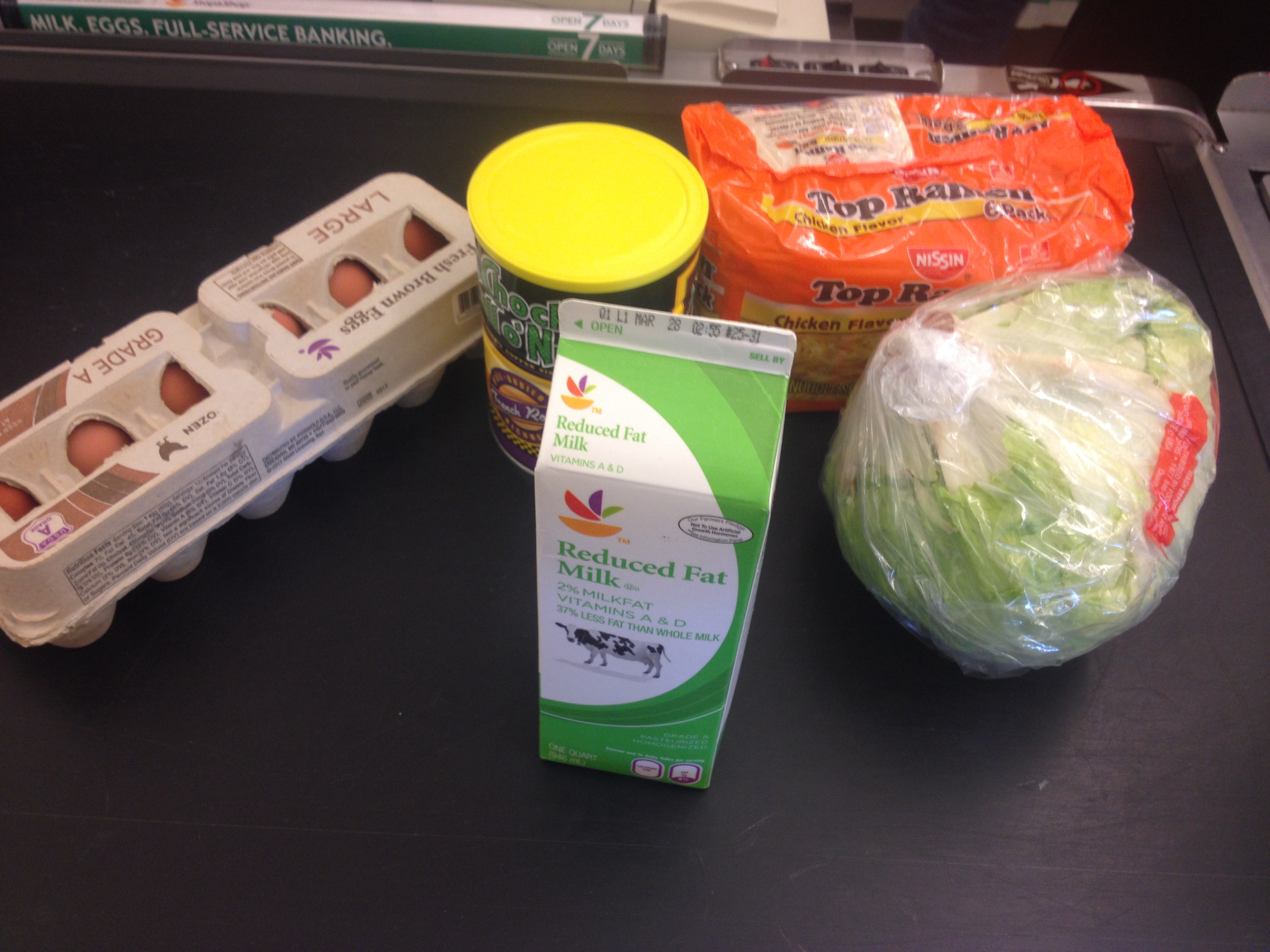
What $7.50 bought after sales, coupons, and making a scene.
Jennifer Burden- USA
They (LBL) got me. Big time. I’ve read about poverty, tweeted about it, gone to the far reaches of Uganda with the Shot@Life campaign, where I met children who are fed their one and only meal a day at school. I’ve also donated to local food banks, here, in NJ, USA. I felt like I knew how important it is that there are people near and far who go hungry and that 1.2 billion people on the planet live below the poverty line, and that I was doing enough. So, like a “know-it-all teenager” I naively went into this challenge thinking that I wouldn’t really learn much. Boy, was I wrong. Really wrong.
Originally, I signed up for a day of the Live Below the Line Challenge, and then, by Day 2, I had
committed myself to the full challenge — 5 days. I thought I’d be celebrating on Day 5 that I had gotten that far, but there was a whole transformation. Check out my video from Day 5:
Every global health advocate, college student, mom, dad, teen, blogger, journalist, CEO, teacher, living human who is living above the poverty level, etc., should consider experiencing the challenge. The impact on eliminating world poverty would be profound if even more people were involved. It would be incredible. The challenge was a REAL eye-opener and new motivator for me. You’ve gotta do this!!!!!
Visit our World Moms Blog Team Live Below The Line Page to benefit UNICEF, where you can donate to help those less fortunate, or see the impact we’ve already made in the challenge.
The Live Below The Line Challenge will run from April 28th to May 2nd and you can
sign up here as an individual or team.
Will you take the challenge?This is an original post written for World Moms Blog by Elizabeth Atalay, Jennifer Burden, Hannah Ashton, Deborah Quinn, and Alison Fraser.

Elizabeth Atalay is a Digital Media Producer, Managing Editor at World Moms Network, and a Social Media Manager. She was a 2015 United Nations Foundation Social Good Fellow, and traveled to Ethiopia as an International Reporting Project New Media Fellow to report on newborn health in 2014. On her personal blog, Documama.org, she uses digital media as a new medium for her background as a documentarian. After having worked on Feature Films and Television series for FOX, NBC, MGM, Columbia Pictures, Warner Brothers, 20th Century Fox, and Castle Rock Pictures, she studied documentary filmmaking and anthropology earning a Masters degree in Media Studies from The New School in New York. Since becoming a Digital Media Producer she has worked on social media campaigns for non-profits such as Save The Children, WaterAid, ONE.org, UNICEF, United Nations Foundation, Edesia, World Pulse, American Heart Association, and The Gates Foundation. Her writing has also been featured on ONE.org, Johnson & Johnson’s BabyCenter.com, EnoughProject.org, GaviAlliance.org, and Worldmomsnetwork.com. Elizabeth has traveled to 70 countries around the world, most recently to Haiti with Artisan Business Network to visit artisans in partnership with Macy’s Heart of Haiti line, which provides sustainable income to Haitian artisans. Elizabeth lives in New England with her husband and four children.
More Posts

by Mamawearpapashirt (Singapore) | Mar 13, 2014 | Babies, Health, Pregnancy

Chinese Herbs
Most people think of confinement (a period of 30 days of recuperating after childbirth) as a rather smelly and icky ordeal where the new mother is not allowed to shower at will, drink plain water, or venture outdoors. At least that’s how one usually does confinement here in Singapore.
My recent one was my third time so in many ways I knew what to expect.
During the first few days in the hospital, I didn’t shower or wash my hair. But I kept my hair clean with a dry shampoo and wiped my body down with a microfiber cloth and warm water.
When I got home, I restricted myself to showering every other day using water boiled with a Chinese herb that helps to remove wind. Thankfully the weather was cool so I didn’t feel uncomfortable at all, even on no-shower days.
In place of water, I drank red date tea, made by boiling red and black dates, dried longans and other herbs in water. This drink has a sweetish taste and the red dates are meant to replenish blood and aid overall recovery, so this is the easiest practice to follow, IMHO. When my red date tea ran out (usually by night-time), I would make a fresh brew of fennel tea, to help with milk supply.
Traditional confinement diet usually encompasses cooking with loads and loads of ginger, sesame oil, and various other Chinese herbs for specific benefits to the postpartum body.
For the first one to two weeks, I ate simple steamed or boiled dishes like steamed fish, fish papaya soup (great for boosting breast-milk) and chicken stir-fried with ginger and black fungus.
Subsequently I had tonic soups too, such as black chicken soup double-boiled with Dom Benedictine.
I avoided cold drinks, vegetables, fruit and bread as the Chinese believe that these lead to more ‘wind’ in the body, which is generally not beneficial as it affects our joints and digestive system.
How did I cook all these nutritious meals? Well, it’s common for new mums to hire a confinement nanny (who stays over at your house) to cook and clean and care for baby during the first month. But as we recently hired a domestic helper, I just provided her with recipes and a rough meal plan so that she knew what to prepare each day.
Joshua, our latest arrival, was sleepy throughout the entire first month which worked out well for me as I could catch up on sleep during the day-time. So I would say my biggest challenge was adjusting to a new routine, which at one month after birth is non-existent.
The other major challenge was coping with the older kids. As I was busy either breastfeeding, caring for myself, or resting, I barely had energy left over for Vera (5 year old) and Javier (3 year old). It helped that the hubby took them out to play on the weekends, and on weekdays when he got home early, but it didn’t alleviate my guilt. As far as I could, I tried to involve my older kids when I was busy with the baby. Obviously they can’t change diapers, but they were pretty good at fetching things and helping to put soiled clothing into the laundry basket. The big sister was especially helpful in distracting him when he was cranky or crying. She also helped to rock the rocker when he needed a nap, and pop his pacifier back whenever it dropped. Sometimes when baby isn’t due to sleep, I’d read them a book while breastfeeding. And on good days when everything fell into place, I tried to do simple activities that they enjoyed, such as painting, art and craft, and bringing them to play with their skate scooters at the nearby park.
For self-care, I followed the age old advice – sleep when baby sleeps. I kept visitors to a minimum so I could focus on caring for baby and getting sufficient rest.
Before I knew it, the month was up. We had a lovely celebration for Joshua’s one-month birthday, which over here is a pretty big thing. And everyone congratulated us for surviving life with three. But as you know, the journey has only just begun…
How did you rest and recuperate after childbirth? What traditional practices do you follow?
Photo credit to the author.
June, born and bred on the sunny and sometimes rainy shores of Singapore, is a mother of two - a chatty 4 y.o. girl and a toddler boy who babbles. She works part-time as a communication consultant, and she is deeply passionate about family, writing, faith, and good old-fashioned love. She can be found on her blog, Mamawearpapashirt.
More Posts

by Karyn Wills | Feb 10, 2014 | 2014, Awareness, Being Thankful, Brothers, Childhood, Education, Family, Food, Health, Life Balance, Life Lesson, Milestones, Motherhood, Nature, New Zealand, Nutrition, Older Children, Parenting, Relationships, Traditions, Travel, Vacationing, World Motherhood
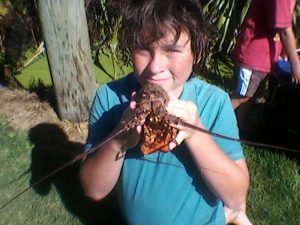 One of my enduring memories of childhood is of trapsing over paddocks, up and down hills, in gumboots too big for my feet picking mushrooms or blackberries. Eventually getting sore heels and aching legs. Eventually filling buckets and ice-cream containers with food.
One of my enduring memories of childhood is of trapsing over paddocks, up and down hills, in gumboots too big for my feet picking mushrooms or blackberries. Eventually getting sore heels and aching legs. Eventually filling buckets and ice-cream containers with food.
Probably scrapping with my sisters. Probably moaning about having to do so. Definitely covered in blackberry juice and scratches on blackberry days. Definitely not impressed by having to pick mushrooms, which I didn’t like to eat.
This summer holiday, my boys got to harvest their own food. Not blackberries and mushrooms, though. They got to harvest seafood.
Tuatua (too-ah-too-ah) are a shellfish. The children love to collect them. We go out at almost low-tide or just after low-tide in thigh-high water. We do the Twist. Our feet sink into the wet sand and feel around for something hard. When we find one, we reach down and pick it up with our hands.
Sometimes, we are side-swiped by a wave. Sometimes, we pick up a round hard sea-biscuit instead. At times, instead of the Tuatua-Twist there is a Crab-Bite-Leap with occasional bad-language. There is almost always laughter and a competition to see who can find the most. This year, the boys and their cousins also took responsibility for collecting fresh seawater twice a day, to keep the Tuatuas in, while they spat out all the sand inside their shells. They kept them cool in the fridge and, when they were finally cooked, the children ate them: some with gusto, others not so much. To me, they taste a bit like chewy seawater…
Our eldest son, 12 year-old Joe, with his 13 year-old girl cousin, Billie, trapped their own crayfish.
Crayfish are related to rock-lobster and, in our extended family, are usually trapped off-shore and by boat, or dived for with scuba-gear and tanks. Joe and Billie had kayaked out around a small peninsula and discovered an old craypot on the rocks. They dragged it out of the sea and managed to convince their fathers to repair it. They then kayaked it out again and dropped it on a good rocky spot.
Each day they went out to check their pot, just as the adults do the other craypots. The first day they caught – seawater. The second day they caught – seawater. The third day they were a bit fed up and otherwise occupied, so didn’t go out. The fourth day or maybe it was the fifth, Billie was out fishing and Joe went out alone to see what was there and to bring the pot in for good. He was very excited to discover they had caught a legal-sized cray! Yes, duly cooked and eaten.
In these days where many children don’t know that carrots grow in the ground or that their meat comes from a real animal, I love that our boys are sometimes involved in the process of food-collection and the processes of preparing it for a meal. I know that these are the Good Old Days and these moments will create some of their childhood memories.
Do your children do similar things you did as a child? Are they involved in collecting or harvesting their own food?
This is an original post to World Moms Blog from our writer in New Zealand and mum of three boys, Karyn Van Der Zwet.
The image used in this post is credited to the author.
Karyn is a teacher, writer and solo mother to three sons. She lives in the sunny wine region of Hawke’s Bay, New Zealand in the city of Napier.
More Posts

by Tinne from Tantrums and Tomatoes | Jan 27, 2014 | 2014, Being Thankful, Belgium, Communication, Health, Life Balance, Life Lesson, Motherhood, Pregnancy, Relationships, Stress, Tantrum and Tomatoes, Women's Rights, Working Mother, World Motherhood

If you Google bullying, there is a whole plethora of websites to choose from. Most of them deal with how to prevent your kid from bullying, how to react when your kid is bullied/being a bully, how to talk to your child about bullying.
But what if it is you—a fully grown adult—who are being bullied and there is really nothing you can do about it because the bully is also an adult…and your boss? And you cannot afford to lose your job.
Here is the situation: years ago I worked for a small, family owned business (You will understand why I do not name any names). I can best describe my boss as the Belgian cousin of Miranda Priestly, the Devil-boss who wore Prada. Believe me she had her down pat. From the sneering “that’s all,” the calls outside work hours, the berating because I could not divine her thoughts and causing her to suffer the indignity of having to actually tell me what was expected, the pout…
Oh yeah, they were related all right.
After little more than a six months, I was actively looking for another job. And then, a week before I planned to resign and tell her to go do something to herself, I found out I was pregnant. And the game and the world as a whole changed completely.
We had just started building our house, there was no way my husband’s salary would cover all the bills and finding a job while you are pregnant is not easy.
So I stayed on. But it was obvious right from the start that they did not like the idea of having a young mother as employee.
Since I was competent at my job they had no reason to fire me outright and because Belgian legislation is rather protective towards pregnant women in the workplace, it became almost impossible to fire me when I handed over the medical bill announcing my pregnancy.
And so the bullying started.
Little things at first. Saddling me with a huge amount of work half an hour before I was due to clock out. Making a mess of the client contact database, insisting it was my fault, even though there was actual proof that it wasn’t.
But when they noticed that I was relatively unaffected things got BAD. In capitals.
While the company was closed for the summer holidays I got a letter detailing every little thing that I had done wrong after I announced I was pregnant. And I really mean everything, like putting one (1!) sheet of paper for an invoice the wrong way up in the printer causing them the loss of a whole eurocent in paper because I had to reprint the page. After that it got even worse than you can imagine. Belittling me in front of clients, calls at all hours, at all times, screaming, yelling, throwing. One day I came into the office to find that my boss had emptied my trashcan all over my desk. Fun times… I can tell you.
You must wonder how I dealt with the situation. Well, I hate to disappoint you, but I did not deal with it.
No, that is wrong. I did deal with it, but not in the way you might imagine. I did nothing.
I showed up for work, I let them scream, I let them yell, I let them belittle me, when they called at 6am on a Sunday I answered the phone and made no complaint. Nothing. When I arrived at the office I did my job. Business as usual.
This was my defense strategy. I did my job and because I continued to do it well, they never had an excuse for firing me.
Yes, I could have filed a complaint for harassment and started a legal procedure. I even started collecting evidence in case I should one day be forced to do so. Chances are very good I would have won, since the evidence was pretty rock solid. Yet, this was never really my intention. I was 29 at the time and legal procedures in Belgium can take a looooooooooooooooooong time. Dragging my employer to court would take ages, it would cost a lot of money and it is the kind of thing which haunts you forever. I still had my way to make in the world, my career was just beginning. A court case was likely to follow me around for my whole life and I did not wish to bring this kind of baggage with me.
I collected—and still keep—the evidence just in case.
In retrospect, I should have gone to my doctor, explained the situation and asked him to declare me unfit for work. But I did not do that. As soon as it was legally possible I resigned and the happy dance I did on my last day of work might have come straight out of a Broadway musical. I never looked back.
Has this situation ever happened to you? What did/would you do?
This is an original post to World Moms Blog from our writer in Belium, Tinne of Tantrum and Tomatoes.
The image used in this post is credited to Elizabeth Atalay.
Born in Belgium on the fourth of July in a time before the invention of the smart phone Tinne is a working mother of two adorably mischievous little girls, the wife of her high school sweetheart and the owner of a black cat called Atilla.
Since she likes to cook her blog is mainly devoted to food and because she is Belgian she has an absurd sense of humour and is frequently snarky. When she is not devoting all her attention to the internet, she likes to read, write and eat chocolate. Her greatest nemesis is laundry.
More Posts - Website
Follow Me:



by Elizabeth Atalay | Jan 14, 2014 | 2014, AIDS, Health, Humanitarian, Malaria, Millennium Development Goals, Social Good, Vaccines, World Moms Blog, World Voice

In 2000, 189 nations made a promise to free people from extreme poverty and multiple deprivations. This pledge turned into the eight Millennium Development Goals, and was written as the Millennium Goal Declaration .- United Nations Development Programme
The goals of MDG #6 are to combat HIV/AIDS, Malaria, and Other Diseases. This month we are thrilled to continue our #Moms4MDG campaign by joining forces with The Bill & Melinda Gates Foundation to take on the topic of preventable infectious diseases.
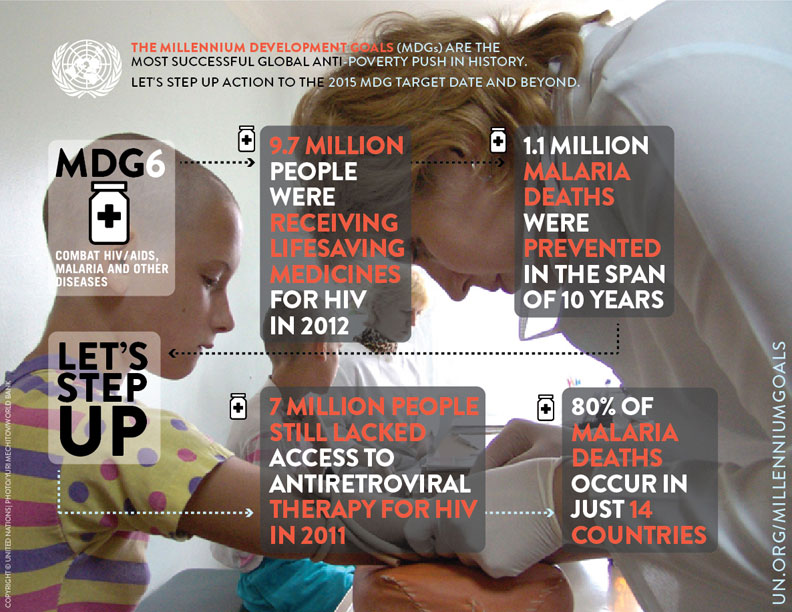
The goals of Millennium Development Goal # 6 are:
- A. To Have halted by 2015 and begun to reverse the spread of HIV/AIDS
- B. By 2010, to have achieved universal access to treatment for HIV/AIDS for all those who need it
- C. To have halted by 2015 and begun to reverse the incidence of malaria and other major diseases
The Bill & Melinda Gates Foundation works tirelessly to support research, solutions and implementation towards improving global health.
Guided by the belief that every life has equal value, the Bill & Melinda Gates Foundation works to help all people lead healthy, productive lives. In developing countries, it focuses on improving people’s health and giving them the chance to lift themselves out of hunger and extreme poverty. In the United States, it seeks to ensure that all people—especially those with the fewest resources—have access to the opportunities they need to succeed in school and life.-www.gatesfoundation.org
Meet us over at the Bill & Melinda Gates Foundation blog Impatient Optimists today to read the guest post by World Moms Blog contributor Erin Threlfall!
We will be co-hosting two #Moms4MDGs Twitter Parties with The Gates Foundation, Multicultural Kid Blogs, InCulture Parent and Girls Globe tomorrow, January 15th at 1-2pm EST and 9-10pm EST, so please join us!
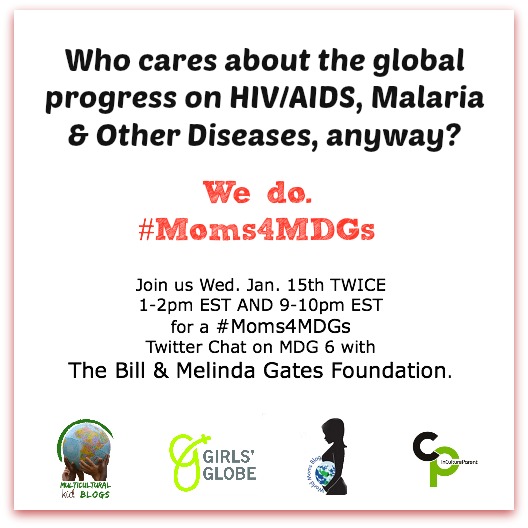
A big THANK YOU, to three amazing sites, Multicultural Kid Blogs, InCulture Parent and Girls Globe for joining us in the rally towards the UN’s Development Goals this month with The Bill and Melinda Gates Foundation!
P.S. Never been to a twitter party before? Go to www.tweetchat.com and put in the hashtag: “#Moms4MDGs during the party times. From there you can retweet and tweet, and the hashtag will automatically be added to your tweets. You can view all of the other party tweets at that hashtag as well!
This is an original post to World Moms Blog by World Voice Editor, Elizabeth Atalay of Documama in Rhode Island, USA.

Elizabeth Atalay is a Digital Media Producer, Managing Editor at World Moms Network, and a Social Media Manager. She was a 2015 United Nations Foundation Social Good Fellow, and traveled to Ethiopia as an International Reporting Project New Media Fellow to report on newborn health in 2014. On her personal blog, Documama.org, she uses digital media as a new medium for her background as a documentarian. After having worked on Feature Films and Television series for FOX, NBC, MGM, Columbia Pictures, Warner Brothers, 20th Century Fox, and Castle Rock Pictures, she studied documentary filmmaking and anthropology earning a Masters degree in Media Studies from The New School in New York. Since becoming a Digital Media Producer she has worked on social media campaigns for non-profits such as Save The Children, WaterAid, ONE.org, UNICEF, United Nations Foundation, Edesia, World Pulse, American Heart Association, and The Gates Foundation. Her writing has also been featured on ONE.org, Johnson & Johnson’s BabyCenter.com, EnoughProject.org, GaviAlliance.org, and Worldmomsnetwork.com. Elizabeth has traveled to 70 countries around the world, most recently to Haiti with Artisan Business Network to visit artisans in partnership with Macy’s Heart of Haiti line, which provides sustainable income to Haitian artisans. Elizabeth lives in New England with her husband and four children.
More Posts

by Tara Bergman (USA) | Jan 10, 2014 | 2013, 2014, Body Image, Health, Life Lesson, Maternal Health, New Year's Resolutions, Stress, Tara B., World Motherhood
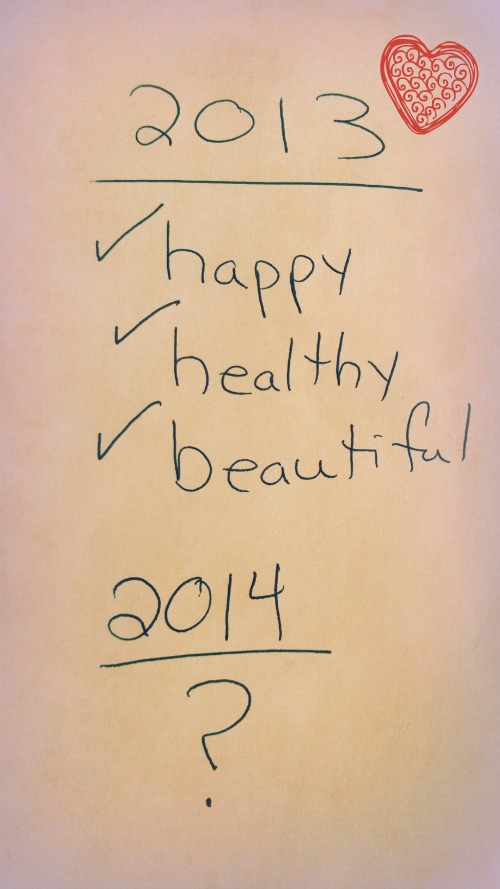 I don’t make resolutions for the new year. December is so full of celebrations and commitments, and I find the idea of sitting down to think through the ways I need to improve myself and make the world a better place overwhelming. I’m a change-as-it-strikes-me-anytime-during-the-year kind of gal. When I can help someone or donate my time and resources somewhere, I do it. As for my personal development, I take stock often. So as I am writing this, with 2013 coming to a close, I’m not focusing on who I will be in 2014. Instead, I’m celebrating on a few key changes I made this past year. (more…)
I don’t make resolutions for the new year. December is so full of celebrations and commitments, and I find the idea of sitting down to think through the ways I need to improve myself and make the world a better place overwhelming. I’m a change-as-it-strikes-me-anytime-during-the-year kind of gal. When I can help someone or donate my time and resources somewhere, I do it. As for my personal development, I take stock often. So as I am writing this, with 2013 coming to a close, I’m not focusing on who I will be in 2014. Instead, I’m celebrating on a few key changes I made this past year. (more…)
Tara is a native Pennsylvanian who moved to the Seattle area in 1998 (sight unseen) with her husband to start their grand life adventure together. Despite the difficult fact that their family is a plane ride away, the couple fell in love with the Pacific Northwest and have put down roots. They have 2 super charged little boys and recently moved out of the Seattle suburbs further east into the country, trading in a Starbucks on every corner for coyotes in the backyard. Tara loves the outdoors (hiking, biking, camping). And, when her family isn't out in nature, they are hunkered down at home with friends, sharing a meal, playing games, and generally having fun. She loves being a stay-at-home mom and sharing her experiences on World Moms Network!
More Posts


















 I don’t make resolutions for the new year. December is so full of celebrations and commitments, and I find the idea of sitting down to think through the ways I need to improve myself and make the world a better place overwhelming. I’m a change-as-it-strikes-me-anytime-during-the-year kind of gal. When I can help someone or donate my time and resources somewhere, I do it. As for my personal development, I take stock often. So as I am writing this, with 2013 coming to a close, I’m not focusing on who I will be in 2014. Instead, I’m celebrating on a few key changes I made this past year.
I don’t make resolutions for the new year. December is so full of celebrations and commitments, and I find the idea of sitting down to think through the ways I need to improve myself and make the world a better place overwhelming. I’m a change-as-it-strikes-me-anytime-during-the-year kind of gal. When I can help someone or donate my time and resources somewhere, I do it. As for my personal development, I take stock often. So as I am writing this, with 2013 coming to a close, I’m not focusing on who I will be in 2014. Instead, I’m celebrating on a few key changes I made this past year. 


